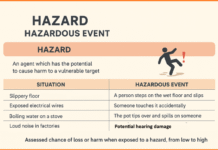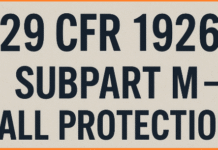What is Safety Sampling?
Safety Sampling is a systematic sampling of particular dangerous activities, the process of the area. It’s a method of measuring hazard or accident potential by random sampling and by counting safety defects while touring (Safety Tour) specified location by a prescribed tour of 15 minutes at the weekly intervals.
The quantum of defects noticed is used to portray trends in a safety situation. The point on safety sampling sheet includes items such as non-use of personal protection, obstructed fire exit, environmental factors, lighting, ventilation, temperature, faulty hand tools, guarding position, Housekeeping machinery condition, etc.
CLICK HERE FOR ? SAFETY PSYCHOLOGY
The results are collected by the safety officer and presented in graph form to monitor the effectiveness of the safety program.
Gives the number of observation N,
When the percentage of unsafe operations P and value of accuracy V (normal value = 10%) are known. For example, if during the preliminary survey of 60 observations, 20 were found unsafe then
This means 812 sample observations would be required to ascertain various unsafe practices with an accuracy of 10%. If 200 observations are possible in one tour, four tours (three tours of 200 and last tour of 212 0bservation) will be required for satisfactory results.
This technique was first employed by American chemical plants and then by ICC’s Dyestuffs Division in UK. It is based on Heinrich’s ratio 1:29:300 opportunities must be observed before one lost-time accident. It is based on samples and not on detailed surveys.
CLICK HERE FOR ? SAFETY APPRAISAL, ANALYSIS AND CONTROL TECHNIQUES
Its difference with safety tour is that the tour is an unscheduled examination of the work area by a team of safety personnel and may last for a longer period to assess safety standards, while safety sampling is a short tour of 15 minutes generally by one observer for the purpose of a random sampling of visible defects and to mark them on a safety sampling checklist.
CLICK HERE FOR ? Recognition and Evaluation of Health Hazards
CLICK HERE FOR ? Safety Aspects of Instruments
Steps of the technique are:-
- List safety defects and hazards applicable to the area.
- Define routes at least two per section or department which the observer can traverse within 15 minutes.
- Train the observers for the correct use of their respective routes and printed checklists.
- Tell the workers the purpose of safety sampling.
- Observers must meet at a convenient place once a week or fortnight. One observer should cover one route alone and mark his sheet.
- Defects found should be corrected by supervision or Department Head.
- Result of sampling Check List are added to summary sheets and plotted on a graph.
You are reading at rlshumancare.com. Do not forget the name RLS HUMAN CARE. Please share with your friends and help RLS HUMAN CARE. Thank You!!









sIR, Why accuracy value 10%, it is constant value or can be change ?
This is the average value and this value change as per your workplace safety index.